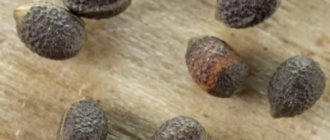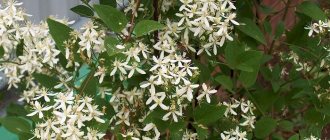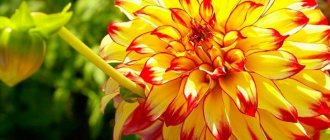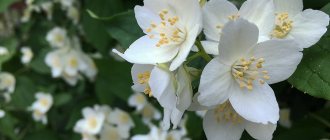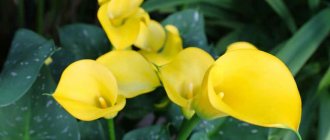Daisies are very popular, beautiful flowers. Planted in the garden, on a terrace or balcony, daisies will be a wonderful decoration from early spring. They are not only beautiful, but also durable and very easy to grow. They are not afraid of cold and dirty weather, so they can be used to create colorful garden compositions as early as April. Let's find out how to grow perennial daisies, planting and caring for plants in open ground, what conditions must be provided for the plants to re-bloom abundantly and for a long time.
Daisy flowers: varieties, description, what they look like?
Daisies belong to the Astrov family. This plant is native to Australia, Europe and America. Almost all modern species of these flowers originate from one species, Perennial Daisy.
Garden daisies develop a rosette in the first year. In the second year, peduncles appear that reach a height of 20-30 cm. Beautiful inflorescences-baskets appear on each peduncle. The number of such inflorescences on one plant can reach 25-30 pieces.
Gardeners use about 30 species of daisies. There are early and late varieties. In addition, daisies can have inflorescences of different shapes and sizes. Flower growers are especially fond of double varieties of daisies.
The most popular varietal series are:
- "Rominette" An early form of daisies. Large, densely double inflorescences are among the first to appear in the garden. These daisies can be planted in flower beds and borders. When planted in groups, these daisies can be used to create a beautiful thick carpet. They are also used in container gardening.
This type of daisy can be painted in one of four colors.
The most popular is “Carmine Rose”
- "Habanera" Another very popular type of double daisies. White Visa Red , painted white with a red tip .
This variety of daisies looks great next to ferns and low-growing conifers. White Visan Red daisies are combined with early tulips, forget-me-nots and some varieties of hyacinths.
- "Tasso" Unlike previous series, daisies of this type have pompom-shaped baskets. Tasso daisies usually bloom early and are compact in size. Most varieties of this species can be used as carpet plants.
There are red, pink and white varieties of Tasso. They prefer sunny open places, but in hot weather direct sunlight can depress the plant. With proper preparation, they tolerate winter cold well.
- "Robella" A variety that was bred not so long ago. Daisies of this variety have salmon-pink terry baskets of folded flowers. Rarely reach a height of 15 cm. This variety was awarded the highest award by the International Organization of Ornamental Floriculture.
Robella daisies will look beautiful in flowerpots, on a rocky hill and in the foreground of a mixborder. This variety of daisies can be combined with tulips, forget-me-nots, daffodils and violas.
Also popular among Russian flower growers is the Pomponette . It is distinguished by bulbous flowers.
Etna daisies have orange centers and dark purple petals.
Schneebel variety is known for the fact that up to 20 large pom-pom flowers are formed on one bush.
The most popular early daisy variety is Rosa Gigantea . And later “Beethoven” . For container keeping or indoor forcing, daisies of the varieties “Dresden China” and “The Pearl” .
Features of culture
Daisy is a herbaceous perennial plant that grows in the wild. In cultivation it is used as a biennial plant, since after two years the flower loses its decorative effect and requires replanting or complete replacement.
The decorative appearance of the plant is given by jagged oblong pubescent leaves, collected in a rosette and beautiful, varied colors, delicate inflorescences-baskets (3-8 cm in diameter), consisting of tubular or false-ligulate flowers, located on several peduncles.
The daisy blooms for a long time and varies in duration, which depends on the planting method and variety.
Information! In the regions of central Russia, flowering, starting in May, continues until autumn, but the peak occurs in June-July. In mid-summer, the seeds begin to ripen and, having fallen off, they sprout after 2 weeks, and by autumn the flowers will again decorate the flowerbed.
But it is better to prevent self-seeding, so as not to create thickening of the plantings and prevent the degeneration of the crop (when self-seeding, varietal characteristics are lost).
Daisy flowers: legends and beliefs
The word "daisy" is derived from the word "margarites". Which means “pearl” in Greek. According to one legend, the little Virgin Mary loved to look at the sky in the evenings. She wanted the stars to become flowers that she could play with. The stars sparkled in the droplets of emerging dew like pearls. And the next day, in place of the dew drops, beautiful flowers appeared - daisies.
Russian legends also mention this flower and pearls. The legend about Sadko says that when he came ashore, his wife Lyubava rushed to her lover and scattered her pearl necklace. In the places where the pearls fell, daisies appeared.
The daisy is sung by many poets. Shakespeare said about this flower, “Her white robe represents naivety.” Pliny called this flower Bellis "beautiful". This is the word used today to call the genus of this flower.
Daisies are revered throughout Europe. In France, it is customary to give these flowers a week before Easter (analogous to our Palm Sunday). Daisies decorate the windows of houses, gardens and parks. It’s a pity, but today these beautiful flowers are gradually being replaced by tulips, daffodils and hyacinths.
Daisies are very popular in England. Songs and legends are dedicated to them. With their help, girls tell fortunes by tearing off the petals of a daisy “loves or dislikes.” In German culture, this is why daisies are called “the measure of love.” And boys, for the quick onset of spring, they must step on 12 forget-me-nots.
Flower of Love
Medieval knights, who received consent for marriage from their lovers, placed an image of this flower on their shields. Most likely, this legend is associated with Countess Margaret, who gave this flower to Count Orlando before going on the Crusade. The count fell in battle, but his friends brought a flower to his beloved. It was stained with the blood of Count Orlando. Margarita planted the seeds of this flower in memory of her beloved.
Since daisies are the first to bloom in the garden, they are also called the “Day's eye”. The English shorten the name of daisies to Daisy .
There is another legend associated with this flower. One rich old man fell in love with a beautiful but young girl. Her poor parents were not averse to giving their daughter in marriage to a rich old man. But the girl didn’t want this and ran away. And in order not to be found, she asked the earth to hide her. The earth turned the girl into a daisy that blooms all year round.
At the beginning of the 20th century in Europe, daisies were used to raise money to fight tuberculosis. This experience was first gained in Sweden, where these popular flowers were sold and the proceeds were donated to hospitals. Later other European countries joined in. In Moscow, such an action was carried out in 1910. The sale of daisies generated 150 thousand rubles. Russian newspapers were full of headlines that Muscovites “threw flowers at death.”
Surprisingly, with such a love for daisies, these flowers also had a black stripe. In 1739 in Germany they were called poisonous and called for extermination. But daisies survived and delight us today with their magnificent beauty.
When to sow daisies in open ground?
Daisies are quite unpretentious plants. They feel good on any composition. The exception may be soils that are excessively acidic and alkaline. A sunny area of the garden is best for daisies. These flowers, blocked by bushes or trees, feel worse than those that receive more light.
It is also important that the soil has good drainage. After clearing the ground of debris, pebbles and plant roots. Today you can buy regular daisy seeds or so-called panned daisies. Such seeds are covered with a special coating that contains nutrients and protects the seeds from pests.
If you are planting pelleted daisy seeds, it is very important to frequently water the area in which the seeds are sown. Water will gradually dissolve the shell and the sprout will sprout faster.
Regular seeds are best planted in open ground in March. When the soil warms up to the desired temperature (15–20°C). It is best to scatter the seeds evenly over the area and sprinkle with a small layer of sand or peat. If you plant daisies in holes, there is a risk of planting them at a depth that is too deep for these flowers. This will not only increase germination time, but can also lead to the death of the plant.
The planting site for daisies should be covered with film to create a “greenhouse effect.” Remove the film after 2-3 days. The soil should not be allowed to dry out. With proper care, plants planted in this way appear in 1.5-2 weeks.
Originator Floragran (floragran)
Daisies of this selection are new among the varieties of this garden plant, but have already been awarded several Fleroselect awards. Floragran (floragran) so far includes only one variety “Belladaisy” (belladaisy) , the rest are under development.
"Belladaisy"
"Belladaisy"
- The grown standard is characterized by small baskets of inflorescences up to 2 cm in diameter with strong doubleness; the stems grow up to 10 cm in height.
- “Belladaisy” tends to completely retain the bright pink color of the petals, and flowering occurs approximately 2.5-3 months after sowing.
- When sowing seeds, it is worth taking into account weather conditions; if the ground is not warm enough, seedlings will not appear soon.
Caring for daisies in the open ground
Daisies are easy to care for. They prefer excess moisture in the soil rather than a lack of it. It is advisable to periodically loosen the soil between the bushes and water 0.5 liters of water under each plant. If the soil in which they grow becomes dry, then when they bloom, the diameter of the daisies may become smaller than usual. Also, lack of moisture can affect terry. She might disappear.
For good growth and vigorous flowering, it is advisable to feed daisies. You can use the following solution: Nitrophoska (2 tablespoons), Agricola-Fantasy fertilizer (2 tablespoons) and water (10 liters). Each bush needs 1 liter of this fertilizer. A solution of bird droppings or mullein also works well.
As for daisy diseases, these flowers are less susceptible to them than other plants. The greatest dangers to daisies are caterpillars and slugs. You can fight them with the “Hom” solution.
Daisies can also be susceptible to gray mold, powdery mildew or rust. At the first signs of these diseases, flowers should be treated with Topaz.
In winter, to prevent low temperatures from causing the daisy bushes to freeze, they should be sprinkled with peat, leaves, humus or snow.
Top dressing
If the crops are grown on sufficiently nutritious soils, fertilizing may not be necessary. But in order to achieve maximum decorativeness of daisies, it is advisable to do this.
- the first feeding - immediately after the snow melts; During this period, nitrogen-potassium fertilizers are applied,
- the second feeding - after the appearance of buds, is carried out using complex fertilizers, for example, nitroammofoska,
- third feeding - during the flowering period, phosphorus-potassium fertilizers are needed.
You can also feed daisies with organic fertilizers, for example, mullein infusion.
You should not overdo it with the amount of fertilizer. Excessive nutrition leads to bushes growing to the detriment of flowering.
Transfer
With proper care, the root system of the daisy is well developed and the plant can safely tolerate replanting at any time, even during flowering.
How to grow daisies on a windowsill or balcony in a pot?
You can also grow daisies at home. The easiest way to do this is to dig up a bush of these flowers from your garden and plant it in a large pot. This is best done in the fall, when the average day temperature drops to +8 degrees.
Daisy in pots
Prepare a bud favorable for this flower. It should be loose and fertile. Add humus and sand to this soil. The pot with the transplanted plant should be placed near the window. Then the daisies will receive the required amount of light and will bloom in December.
If you plant daisies in pots made from seeds, they will begin to bloom only the next year. The best time to plant seeds of this flower is March-April. Pots or boxes with seedlings should be placed in a sunny window and watered moderately.
When the seedlings have their first true leaves, they can be planted in separate pots or transplanted into containers with several seedlings each. When rosettes appear, daisies can be grown like other house flowers.
In order for daisies to bloom profusely next year, they need to be placed in a cool place in November and watering reduced to a minimum. At the end of February, the plants are placed on the windowsill again and watered as normal.
For a flower garden planted on a balcony, it is best to choose special containers for daisies, which are sold in hardware stores. And in order not to waste time watering these plants, you can buy and install special automatic systems for moistening the soil.
Growing Daisies: Tips and Reviews
Natalia. Very beautiful flowers. But they need constant watering. Their root system is located almost on the surface and if the soil dries out, the roots can be damaged. And this arrangement of roots does not allow them to withstand dry days. We are only at the dacha on weekends. Somehow we left and forgot to water it. It was a dry week and our daisies withered.
Svetlana. Very beautiful flowers. But I heard that they are also very useful. Based on them, you can make decoctions that help with bronchitis and kidney disease.
Collecting seeds
Daisy seeds do not give away all at once, but as they ripen during a long flowering period, so if you want to collect all the seed material, you need to do this in stages every 5-7 days. It is necessary to carefully cut off the already wilted but not yet scattered seeds of the inflorescence, shake them out onto paper and lay them out on it to dry. For storage, paper envelopes or bags are also used, which are left in a dry and dark place for the winter.
Before harvesting, do not water the daisies; jets of water can easily wash away the ripe seeds.


